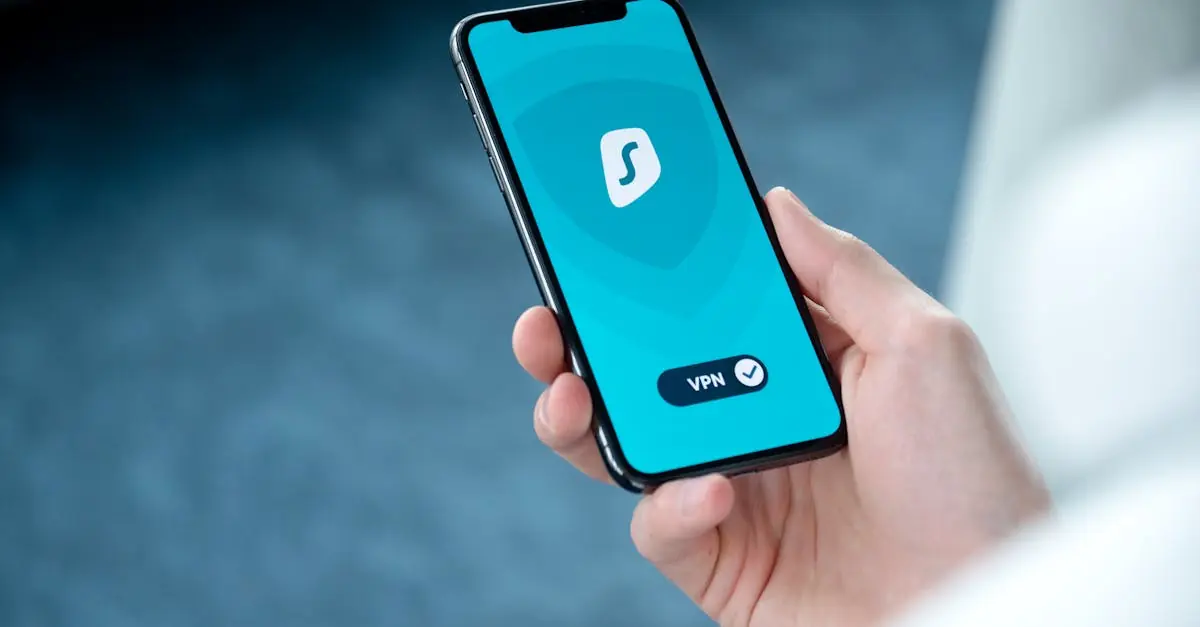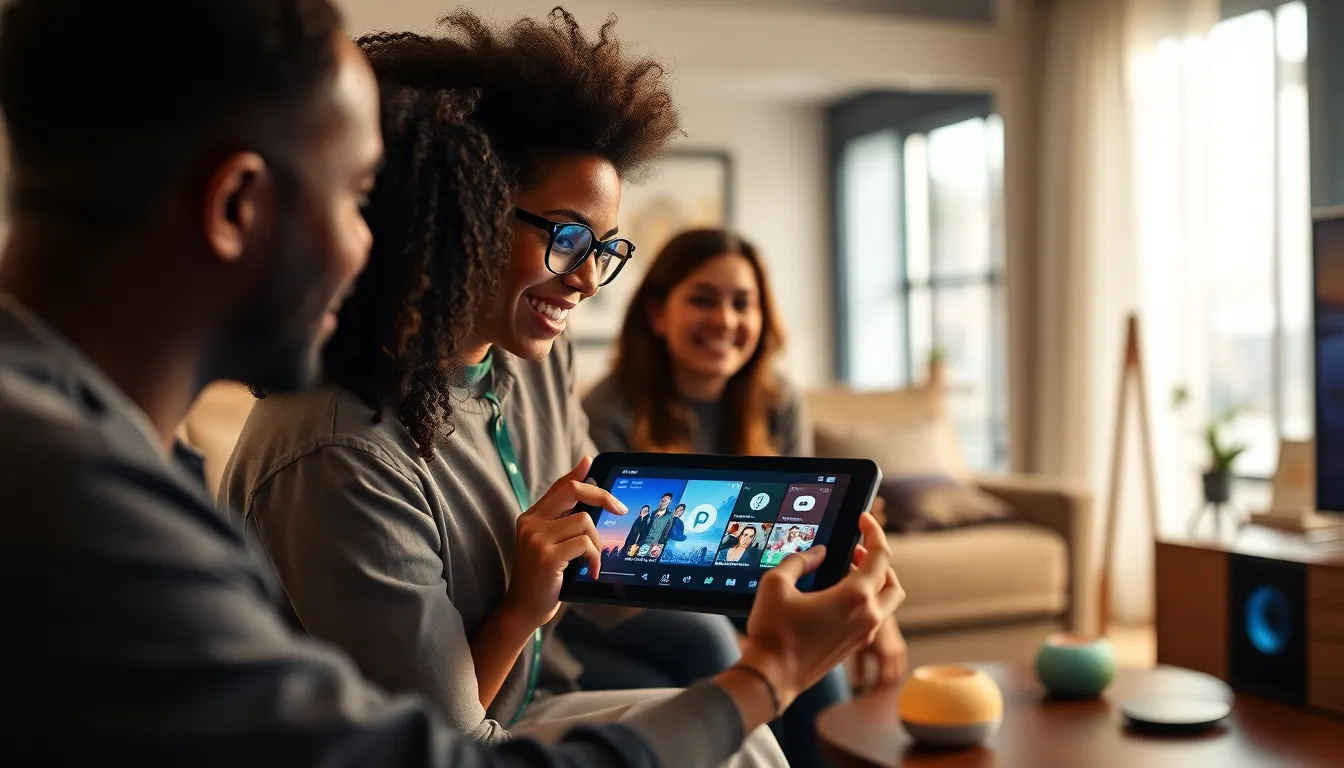In a world where privacy feels like a luxury, unlocking private browsing on an iPhone can feel like discovering a hidden treasure. Picture this: you’re on a quest for the perfect gift, but you don’t want your browsing history to reveal your secrets. Fear not, because private browsing is here to save the day!
Table of Contents
ToggleUnderstanding Private Browsing on iPhone
Private browsing on an iPhone offers users a secure way to explore the internet without leaving traceable footprints. This feature allows individuals to browse websites without having their history recorded. Important aspects include the automatic deletion of cookies and website data once the browsing session ends.
Users often choose private browsing for various reasons. For instance, searching for gifts remains confidential, preventing unwanted access to browsing history. Additionally, accessing sensitive information while connected to public Wi-Fi offers an added layer of security.
Turning on private browsing is simple. Opening Safari and selecting the “Private” option at the bottom of the screen activates the mode. Users can easily identify this feature by the dark-colored interface that appears during private sessions.
Private browsing doesn’t provide complete anonymity. Websites can still track users, and internet service providers maintain logs of browsing activity. Being aware of these limitations is essential when utilizing this feature for privacy.
Adopting this feature enhances personal privacy in daily online activities. Everyday tasks, such as comparing prices or reading articles, can become more private experiences. Implementing private browsing empowers users to control their online presence effectively.
Reasons to Unlock Private Browsing
Unlocking private browsing on an iPhone provides users with enhanced control over their online activities. Various reasons motivate individuals to use this feature, from safeguarding personal information to managing internet usage effectively.
Privacy Considerations
Privacy remains a primary concern for many users. Private browsing prevents tracking by websites and eliminates the risk of others accessing browsing history on shared devices. Browsing without leaving traces becomes crucial when searching for sensitive topics or confidential information. Those who utilize public Wi-Fi find that private browsing shields them from prying eyes, as it deletes cookies and website data automatically post-session. Enhanced privacy not only fosters peace of mind but also empowers users to make informed decisions about online activities.
Parental Controls
Parental controls play a vital role in managing children’s online experiences. Parents can use private browsing to review their child’s browsing behavior without previous session history impacting their assessments. By enabling private browsing, guardians can ensure that children avoid inappropriate content without leaving a permanent record of activities. This feature encourages healthier online habits by offering an opportunity for monitoring without compromising privacy. Using private browsing allows parents to maintain a balance between supervision and allowing children to explore the internet freely.
Steps to Unlock Private Browsing on iPhone
Unlocking private browsing on an iPhone requires a few straightforward steps within the device settings.
Accessing Settings
First, users must navigate to the Settings app on their iPhone. The app icon resembles a gear and is typically located on the home screen. Once in Settings, they need to scroll down and select Safari from the list of options. After tapping on Safari, they can find numerous browsing settings. Users should look for the “Private Browsing” option. If it is disabled, this indicates the need for unlocking. The dark interface signifies private browsing mode is activated.
Modifying Restrictions
To modify restrictions, users must return to the main Settings menu. They should then tap on “Screen Time” at the top. After that, they need to select “Content & Privacy Restrictions.” This section controls various settings, including private browsing features. When accessing this area, users should ensure that “Content & Privacy Restrictions” are enabled. Toggling on these restrictions allows further adjustments in the Safari settings. Users must look for “Web Content” in this menu and make sure that “Limit Adult Websites” is not selected, allowing for a more flexible browsing experience.
Troubleshooting Common Issues
Unlocking private browsing on an iPhone can sometimes lead to complications. Addressing common issues helps streamline the process.
Forgotten Screen Time Passcode
Forgotten Screen Time passcodes can hinder access to private browsing settings. Users may reset their passcode by navigating to the Apple ID account settings on their device. Selecting “Forgot Passcode?” initiates the recovery process. It’s crucial to remember that this option requires access to the registered email linked to the Apple ID. After setting a new passcode, users regain full control over the Screen Time settings, allowing them to enable private browsing once again.
Software Updates
Outdated software sometimes causes issues with accessing private browsing. Checking for software updates is vital. Users can do this by opening the Settings app, tapping on “General,” then selecting “Software Update.” The iPhone will display if any updates are available. Installing the latest updates ensures that all features, including private browsing, function properly and securely. Staying current with updates minimizes glitches and enhances overall performance, providing a smoother browsing experience.
Unlocking private browsing on an iPhone empowers users to maintain their online privacy and control their digital footprint. By following simple steps to enable this feature, individuals can browse the internet more securely, especially when using public Wi-Fi or shared devices.
While private browsing isn’t a foolproof solution against all tracking methods, it significantly reduces the chances of leaving sensitive information behind. With the right settings in place, users can confidently explore the web, ensuring their activities remain discreet. Embracing this feature not only enhances personal security but also promotes healthier online habits, making it a valuable tool for anyone concerned about privacy.




